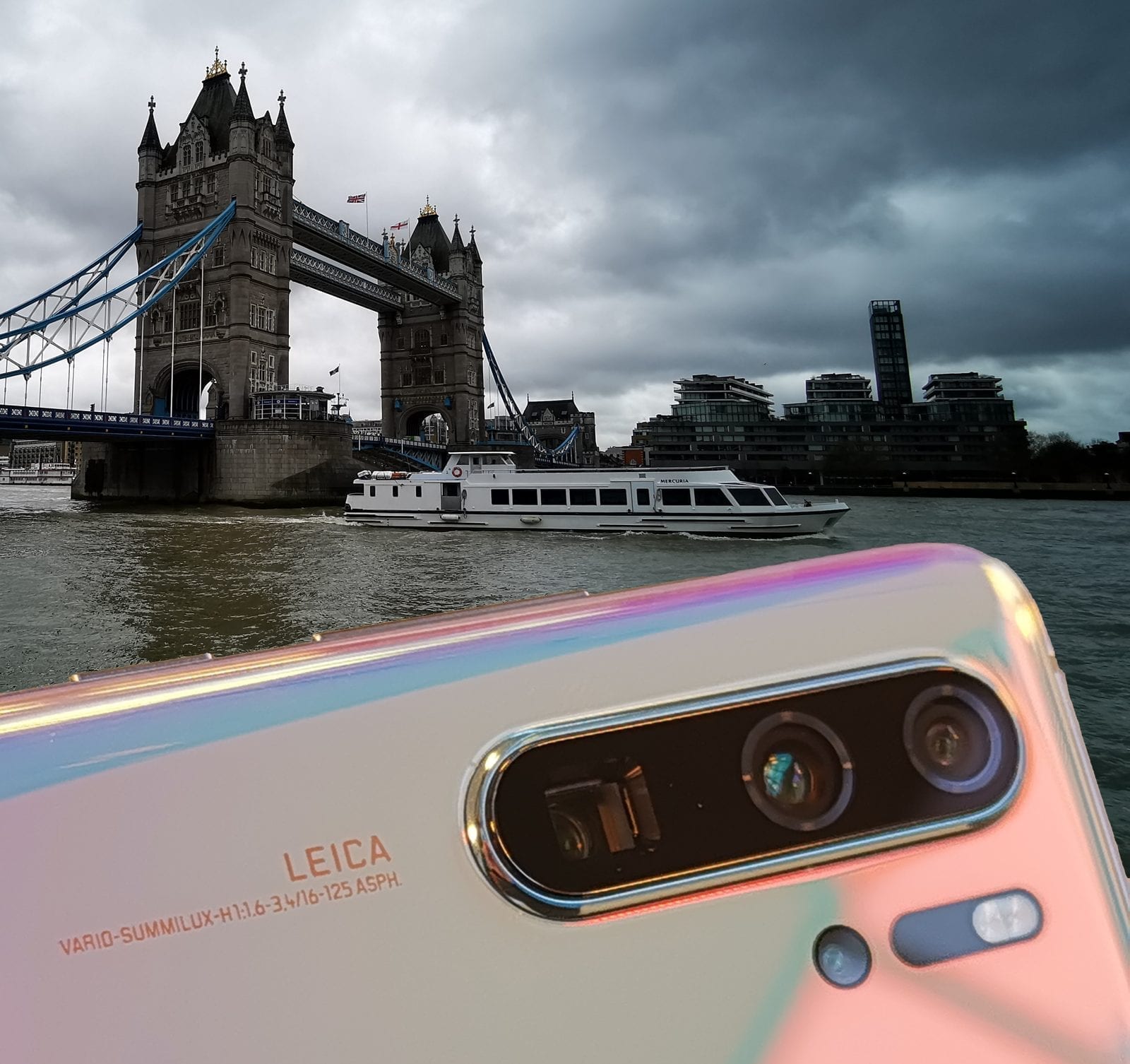
Huawei P30 Pro Review: A phone with a camera for every occasion
When it comes to flagship Huawei phones, you can be assured of two key launches every year. In the autumn, the Mate series showcases the latest chipset. In the spring, it’s the turn of the P series to break new ground on the camera tech.
In the past, there has been some blurring of the lines between each model, with a Mate-branded Porsche Design variant launched alongside the P20 series last year.
This year, it has all become more clearly defined. It was all about the P series.
However, many of the people who visit this site will see the Mate and P series as interchangeable, and you may be wondering exactly how much more advanced the P30 Pro is over the Mate 20 Pro.
The answer is there’s not much different hardware wise, but the camera… well, that’s what makes this phone such a tremendous leap.
I’ve already covered quite a bit in my original hands-on from the pre-launch briefing. Please take some time to read (or re-read) that, as it seems pointless to repeat myself.
If you can’t be bothered to read that, let me summarise; the P30 Pro introduces an all new image sensor with an ISO of 409,600 (using a new red-yellow-yellow-blue sensor instead of the traditional red-green-green-blue) and a periscope zoom that offers a 5x optical zoom. In addition to the wide angle sensor and a 3D Time-of-Flight (ToF) sensor, it all adds up to four individual sensors.
Design
Huawei has opted to make the Mate series and P-series look pretty unique from the back, to make each one as recognisable from a distance as an iPhone or Samsung Galaxy. This is intentional for brand awareness, and it certainly makes it easy to spot people using a Huawei phone ‘in the wild’.
For a company looking to take the number one spot, brand recognition is key. Gone are the days when someone would look at the phone and appear confused. Chances are, people know you’ve got a Huawei phone. It’s taken the company a long time (and a lot of money) to get where it is today, and while other Chinese phone makers are hoping to do the same, they’ll likely have to invest a lot more time and money to stand a chance.
The P30 Pro continues with the look from last year’s P20 Pro, but obviously now has to fit in the extra camera tech, such as the periscope zoom (that sits horizontally inside the phone when in a portrait position) and the ToF sensor.
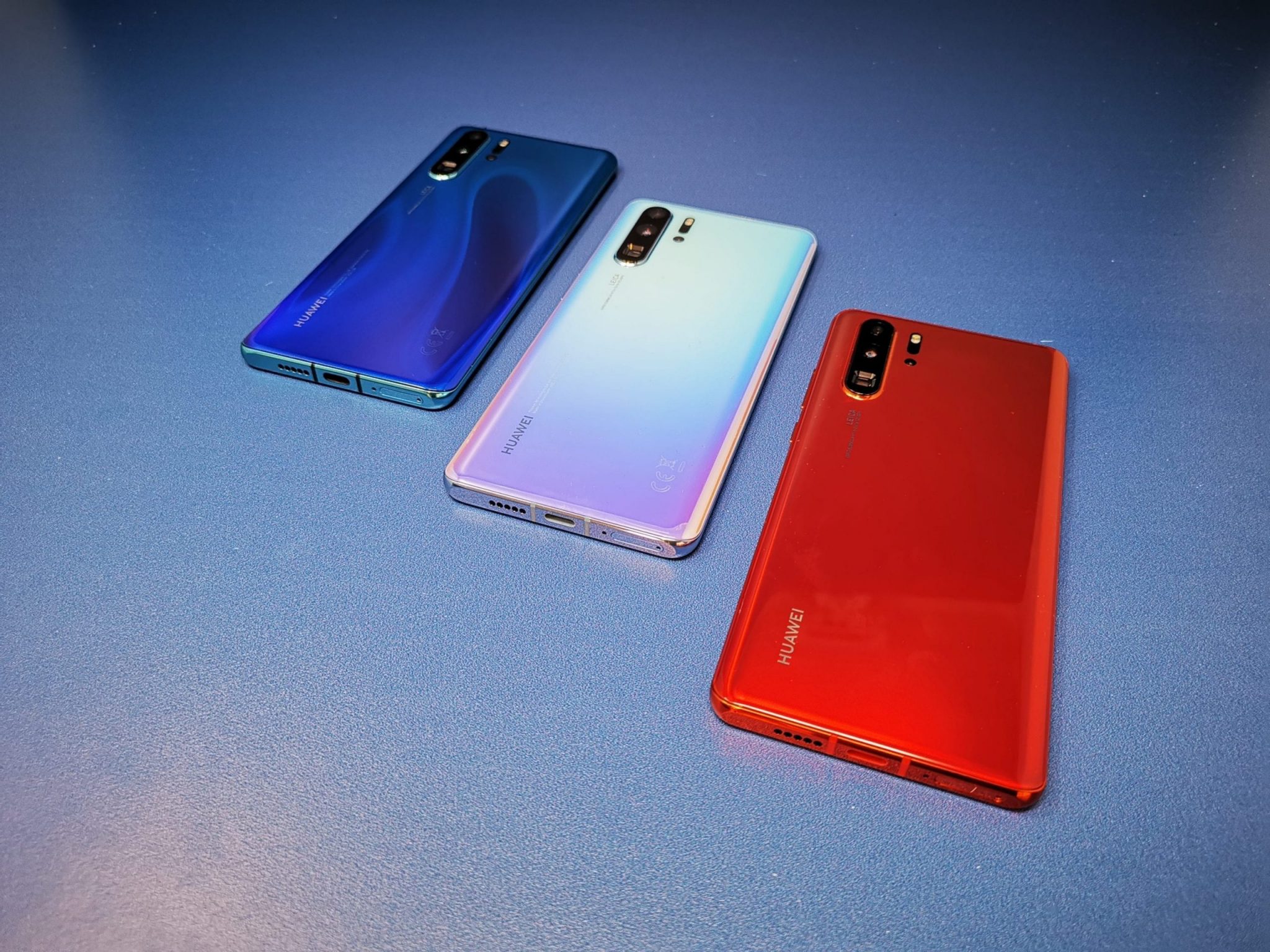
Beyond that, there’s not much else that is different, except for a few different colours that now includes ‘amber sunset’ (that looks quite orange in the flesh), ‘breathing crystal’ (the model I have), ‘pearl white’ (with a hint of pink), ‘aurora’, and black.
Black might seem rather boring amongst all those, but if you don’t want your phone to stand out then it’s the sensible choice. Otherwise you can be more flamboyant, and hide the phone in a case as and when required.
For most of the world, the phone comes with a flexible clear case in the box, but UK customers will likely find this removed so the network or retailer can sell you one instead. It happened too with the Mate 20 Pro and it’s a little disappointing, although the upside is that it now means retailers are at least stocking official accessories where they didn’t before.
Huawei has its own range of cases (from the simple clear case I mentioned, to more rugged ones, a waterproof casing, through to a flip-case with a clear window that allows the phone to show the time and other info through it).
Or you can look to the likes of Amazon for an even bigger range. Spigen has a few different choices, which I’d recommend from previous experience (I am not being paid to recommend any particular cases, but I’ve never been let down yet).

At the top of the phone you’ll find the now obligatory Infrared port that can control your TV, set top box, or other things like an air conditioner. On the side, you’ll find the volume keys and a power button that can be held to activate Google Assistant, and at the bottom, a single mono speaker and USB-C charging port.
The P30 Pro no longer has the stereo mode that the Mate 20 Pro offered, as well as the P20 Pro. This is because there’s no earpiece (I’ll explain more in a bit).
The volume was always lower from the earpice, so as a consequence the overall volume was restricted. With no stereo sound to balance here, the P30 Pro is louder overall. But, obviously, without stereo.
It’s one of a few differences, which also includes the loss of a notification LED at the front. Instead, the always on display (disabled by default) can now show more notifications in icon form instead.
Oh, and there’s no 3.5mm headphone port.
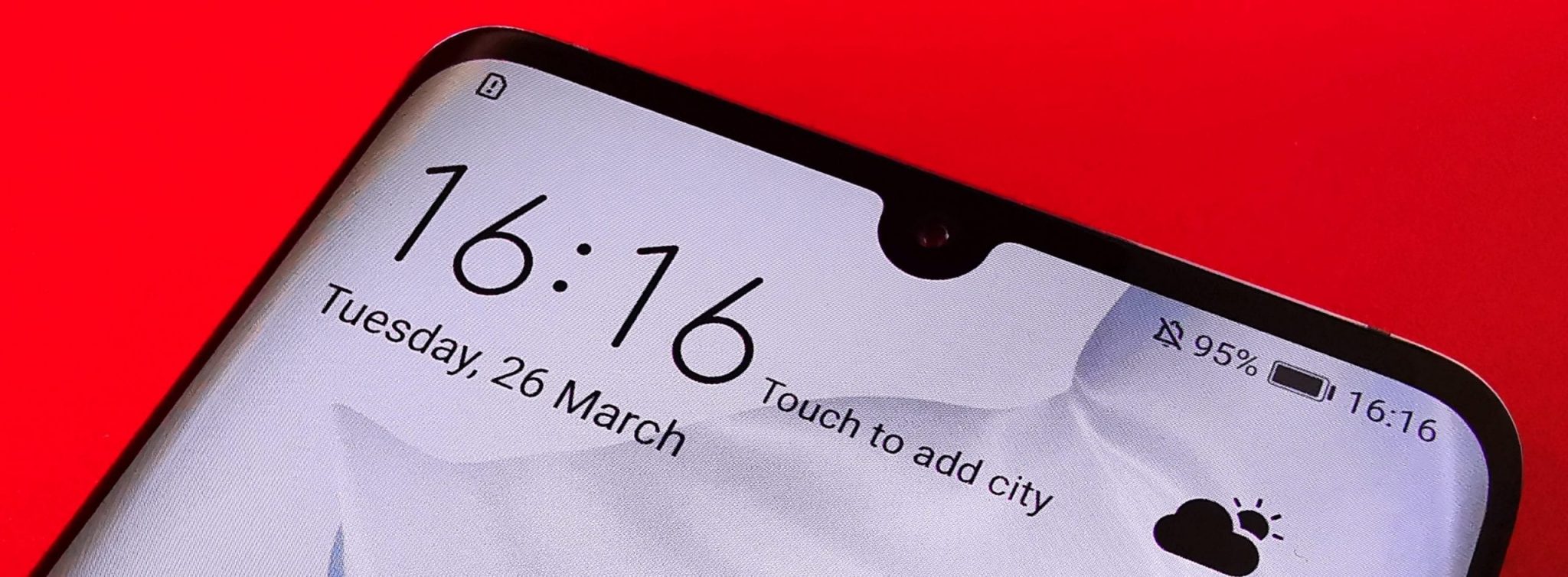
Screen
The screen is now larger than that of the Mate 20 Pro (6.47 inches versus 6.39 inches). This is considerably up on the 6.1 inch screen size of the P20 Pro.
The P20 Pro had to accommodate a fingerprint sensor below the display. Since the Mate 20 Pro, this has been embedded within the display. On the P30 Pro it has been moved much lower down, and given a major improvement in sensitivity and accuracy.
Although the P30 Pro doesn’t come with a screen protector fitted, I purchased a flexible plastic one and it didn’t impact on the sensor at all. I’ve found that glass ones can massively hinder the sensor, so would strongly advise you to check carefully before purchasing something that might remove the ability to quickly unlock the phone.
The screen resolution is 1080 x 2340 pixels (a 19.5:9 ratio) which is higher than the P20 Pro (1080 x 2240 pixels, 18.7:9 ratio) but down on the Mate 20 Pro’s 1440 x 3120 pixel screen, also with the same 19.5:9 ratio.

Will you notice the pixels in normal use? I’d say no – but that’s probably because in most cases the Mate 20 Pro will have the smart screen resolution mode set. So, for just about everything the screen is effectively rendered exactly the same; full HD+.
Obviously there will be a difference when viewing photos or video (if you opt to stream 1440p video), so this is one area where the Mate wins out. If you really need the bump in PPI, you’ll need to hang on for the Mate 30 Pro this autumn.
The P30 Pro retains the curved display of the Mate 20 Pro, and side by side it’s only really the notch layout that allows you tell which is which. The P30 Pro has a single 32-megapixel selfie camera, while the Mate 20 Pro has a 24-megapixel camera alongside a range of sensors to allow the face unlocking technology to combine a highly secure system that also works in the dark.and usage in the dark.
If you want use face unlock on the P30 Pro, you’ll have to accept it will operate from the camera alone. It isn’t as secure, nor does it work in the dark. Like the screen resolution, this is another feature you’ll need to be willing to sacrifice if you want the new camera.
Finally, going back to the P30 Pro having no earpiece, you may be wondering how you can make and receive calls. Well, this is thanks to the screen itself vibrating to produce sound. It works exceptionally well and makes me think that all phones should adopt this technology in the future to save space, and also make it possible to hear the other caller however you hold the phone to your ear.
It’s worth noting that this isn’t the first phone to produce audio this way, but it’s by far the most mainstream phone to do so thus far.

Camera
I covered the camera tech in my hands-on, so I won’t repeat it all again. Please do take a look to get a full understanding of what Huawei has done with the camera.
Here it makes more sense to show some of the photos that can be taken on this phone in a range of conditions, to show how much of an all-rounder the phone is. Rather like all the previous models that go back to when Huawei first announced its partnership with Leica for the P9. It’s been quite a journey and whenever it looks like there’s no much more than can be done, Huawei surprises once again.
Will the phone finally put professional photographers with their expensive set of cameras and lenses out of business? Of course not. But, it’s as true today as it ever was that the best camera is the one you have with you, and with the multitude of different modes on the P30 Pro, you have something in your pocket that is good for pretty much every conceivable situation.
Why pack bulky camera equipment on your next holiday when the P30 Pro can take any shot you want?
It won’t necessarily get things right every single time, so you’ll also need to experiment a little bit to get the best results. For example, the primary camera that takes photos in virtual darkness can’t work miracles. It will require some light (albeit as low as 1 lux) and should the light be anything but white (warm or cold), you may end up with a colour cast that makes everything look odd (such as LED clock radio, or sodium street lighting).
Again, experiment with different conditions and find out what works best for you. When you get your first shot of a night sky with the stars and moon, you’ll know just how powerful this camera is.
Outdoors, the traditional night mode may work better on occasion. But that won’t work as well with movement.

Night mode (AI stabilisation) 
Night mode (AI stabilisation) 
Night mode (AI stabilisation) 
Night mode (AI stabilisation)
Use the zoom or wide angle and you’re going to lose that incredible ISO 409,600 mode.
Digital Zoom – gimmick or not?
Talking of the zoom capabilities, the 50x digital mode was never intended to be a mode you’d utilise often (if at all), but the performance in good light has actually shown itself to be surprisingly good. Suffice to say, a lot of owners have been using this (or magnifications between the 10x hybrid zoom and 50x) with impressive results.


1x 
5x 
10x 
50x 
0.6x (wide angle) 
1x 
5x 
10x
Sure, they don’t stand up to scrutiny if viewed at 100% on a big screen, but for a generation of users that want to post photos instantly, you can now post zoomed-in photos with ease. No need for post-processing and cropping, unless of course you want to (all the manual modes are still here, including RAW image saving).
There are obviously many other competitor phones that offer great performance in a range of areas too. Many phones offer good low-light photography, while the AI stabilised night mode has been copied by others with pleasing results.
However, the P30 Pro performs well in every area. My only disappointment came from the video performance, which is still an area where Huawei needs further work. I wasn’t able to do as much testing in this areas as I’d have liked before posting the review, but unless using the primary camera, I found the video footage to lack detail.
Stability is good, but it seems video is at a lower bitrate than competitor products. You can choose between H.264 and H.265 encoding (the latter offering smaller file sizes as the expense of compatibility) and video is by no means bad, just nothing exceptional.
Even DxOMark noted this on its score, which actually ranked the P30 Pro one point lower than the P20 Pro (but the P30 Pro made up for this on the image side, giving it an overall top-score).
However, while the video quality may not be exceptional, the low light capabilities are still excellent so it’s not a total write off as these video clips will hopefully show.
It should also be noted that some camera features shown at the press launch event are not due to come until May or June, such as a dual view video mode (allowing you to record a split screen video with 0.6x and 1x footage side-by-side) or AI stabilisation on some of the light effect modes, such as recording running water/waterfalls.
Another feature coming will take advantage of the Time-of-Flight camera to allow you to measure rooms and objects, just by pointing the camera at them.

Don’t let expectations run wild
While the camera pushes the boundaries in so many ways, ‘rewriting the rules’ as Huawei put it, there are some limitations that you need to be aware of. No doubt these things will be on the list of things to do for the next phone.
For a lot of people, the standard photo mode will the default and the only thing to change will be the level of zoom. As long as the AI scene detection mode is enabled, it will adjust the settings (including switching to portrait mode) as and when required.
You really should experiment with the different modes (and there are plenty) and have fun with the camera. At the time of writing, I feel the P30 Pro is the best mobile camera I’ve ever used because of its incredible versatility.

Performance & Features
Given Huawei’s decision to launch its new chipset in the second half of the year, the company has previously stated that it both ends the year and starts the year with the best performing chipset.

This means the Mate series always gets to pioneer the newest and greatest technology, and that’s no different here. The P30 Pro retains the same chipset that rivals can argue is ‘last year’s tech’.
In the time between the release of the Mate 20 Pro and the P30 Pro, Qualcomm has begun seeing its 2019 flagship SoC, Snapdragon 855, appear in a number of different handsets. Often with 5G available as an optional variant.
On paper, Qualcomm potentially has the edge, but there’s not a lot wrong with the performance of the Kirin 980 chip and the dual NPUs (neural processing units), especially as the P30 Pro now has a new file system that promises a boost in access times from the internal storage (which ranges from 128GB through to 256GB and 512GB, alongside Huawei’s own nano-memory cards).
With no platform change, the P30 series has no 5G variant. The first 5G phone from Huawei will be in the Mate family. We know about the Mate X folding phone and there was also news of the Mate 20 X 5G variant when the Mate X was announced, but going forward it stands to reason that Huawei will introduce 5G support with the Mate 30 series. The timing of which will better fit with numerous 5G network switch ons in the 3rd or 4th quarter of 2019.
The build of Emotion UI (EMUI) on the P30 Pro is now 9.1, a version that will be gradually rolling out to other Huawei and Honor models as time goes on.

Despite not being a model designed for business users, things like the wireless (and wired) screen sharing with a dedicated desktop mode still features on the P30 Pro.
There’s wireless charging still, IP68 water/dust resistance and it still supports 40W super charging – with the fast charger included in the box.
There’s reverse wireless charging too, a feature I’ve used only for showing others that I can do it. I did jokingly use my Mate 20 Pro to charge the P30 Pro, but given the slow speed, and the inefficiency, it’s really not a must-have feature – but like many other features, they’re great to have if they don’t impact on the overall performance and to the overall package.

In fact, pretty much all of the software features are the same here. If Huawei ever wants to more clearly split the two models apart, it may have to consider disabling some functionality – but that’s a move I’m certain many, including myself, would hate to see happen.
The battery on the P30 Pro is 4,200mAh (same as the Mate 20 Pro) and it’s great that nobody considered cutting this back to shave off a millimetre, or to differentiate between the Mate series.

Final thoughts
I’ve written this review with a slightly unorthodox approach, as many of my thoughts are based on coming from the Mate 20 Pro; something most people (bar other early adopters and gadget nerds) aren’t really likely to be doing.
It’s far more likely that someone looking at a P30 Pro is coming from a P20 Pro, or maybe even a P10, if already owning a Huawei phone. Otherwise there’s a chance people are coming from a totally different handset manufacturer completely.
For non-Huawei users, one common fear is that Emotion UI is in some way a mess. It gets slated a lot in the tech community, but in reality, every new version becomes more and more similar to what you’d now get on a Samsung phone with its One UI, or a Google Pixel phone.
While I can easily switch between different Android skins, whether EMUI, One UI, native Android, Color OS, MIUI and others, I have a real soft spot for EMUI. This opinion is obviously subjective, and your mileage may vary but I have never known anyone who buys a Huawei phone to say anything bad about it after getting used to it.
I apologise for not making many comparisons to other handsets, merely because I haven’t had access to all the other models on the market right now. This is why I hope the photos and video posted here, as well as on my open gallery, will speak for themselves.

As a further thought, it’s important to talk about the price. The P30 Pro isn’t cheap, with a starting price SIM free of £799 and rising to over £1000 for the 512GB model. This also makes it expensive on contract, especially if you want or need a lot of data.
Unless you are desperate for the amber sunrise colour (which is only available on the 512GB storage model), you’ll be just fine with 128GB (especially when that can be expanded).
£799 certainly isn’t cheap, but there is a price to pay for such a step change in camera technology. Perhaps Huawei, like others, are being a little too greedy but it’s certainly in line with the whole industry – whether that’s good or bad.
If you aren’t willing to pay this much now, you may find the price falls when the Mate 30 series is launched, likely in October or November. You might also find that Honor includes some of the functionality on its upcoming Honor 20 series phones.
While it’s not clear when the clever ‘Super Spectrum’ (also referred to as ‘Super Sensing’) camera might be used on other phones, the upcoming Oppo Reno will offer the same periscope zoom lens technology. You can expect other handsets to copy some or all of these features as time goes on, including Apple that is widely expected to make some big changes to its camera setup later this year,
All this shows that 2019 isn’t going to be just about the build up to 5G. There’s plenty to play for in the world of mobile photography, and the P30 Pro is the gold standard right now.
Good Points
– Incredibly versatile camera
– 4,200mAh battery means no need to compromise
– Great HDR display
– Excellent performance from Kirin 980
Bad Points
– Loss of stereo sound
– Video recording not as good as stills
– Expensive
“There’s plenty to play for in the world of mobile photography, and the Huawei P30 Pro is the gold standard right now.”
What’s next?
As I wrote this review, I couldn’t help but wonder what comes next. It stands to reason the next phone will bring 5G, but what about the camera(s)?
I’ve tried to be pragmatic. In some ways, I might be rather too conservative with my predictions, but I feel the Mate 30 Pro will not push the boundaries in the same way as the next P series, and may concentrate on finding a way to keep the security of the face unlocking tech, without a large notch.
The Mate 30 Pro may see an improvement on the screen-to-body ratio, with a higher resolution display once more.
For the camera, the next obvious improvement will come by offering the same low-light sensitivity of the primary camera on the other cameras to allow the incredible photography in the dark with all magnifications.
Video will also have to improve. Allow for higher bitrates and improved optical stabilisation to keep the resolution as high as possible (AI stabilisation comes by cropping the video to keep it stable, reducing quality in the process).
There’s a good chance there will be some other surprises too, but we’ll have to wait and see!
Single/Dual SIM?
Most UK sellers are only stocking the single SIM model, although Three does supply the dual SIM variant that is also unlocked. EE is stocking the dual SIM model too, but it is reportedly locked. It is not clear if the SIM unlock will activate the second SIM so please check with EE before purchasing if you need the ability to use a second SIM.
The dual SIM version supports dual 4G access and dual VoLTE (4G calling) and VoWiFi (Wi-Fi calling). The single SIM also supports VoLTE and VoWiFi. Like the Mate 20 Pro, the P30 Pro comes with a 4G Cat 21 modem for speeds of up to 1.4Gbps down and 200Mbps up.
Disclosure
Huawei has not had any input in my review. I received a loan sample at the launch event in order to carry out a review at my own leisure. All thoughts published here are my own.
More info: Huawei P30 Pro (official website) | My Google Photos Gallery | My P30 Pro hands-on

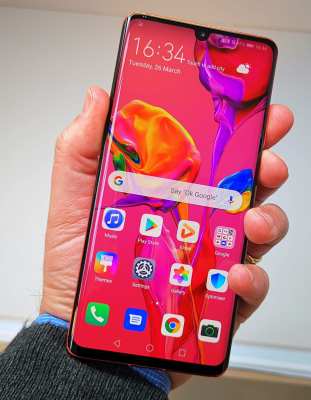





















































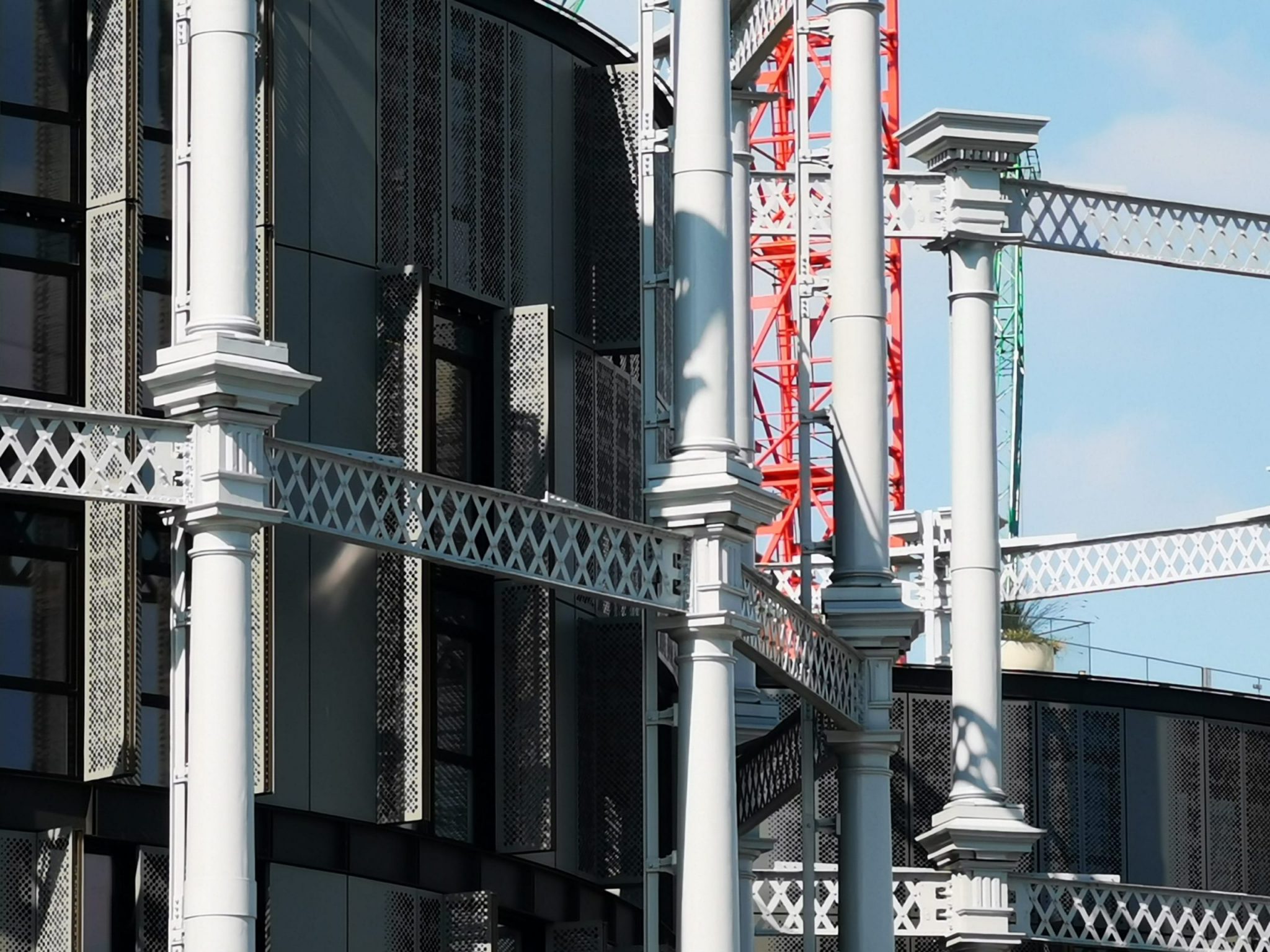



PSA: O2 UK have disabled VoWiFi and VoLTE on their P30 Pro firmware.